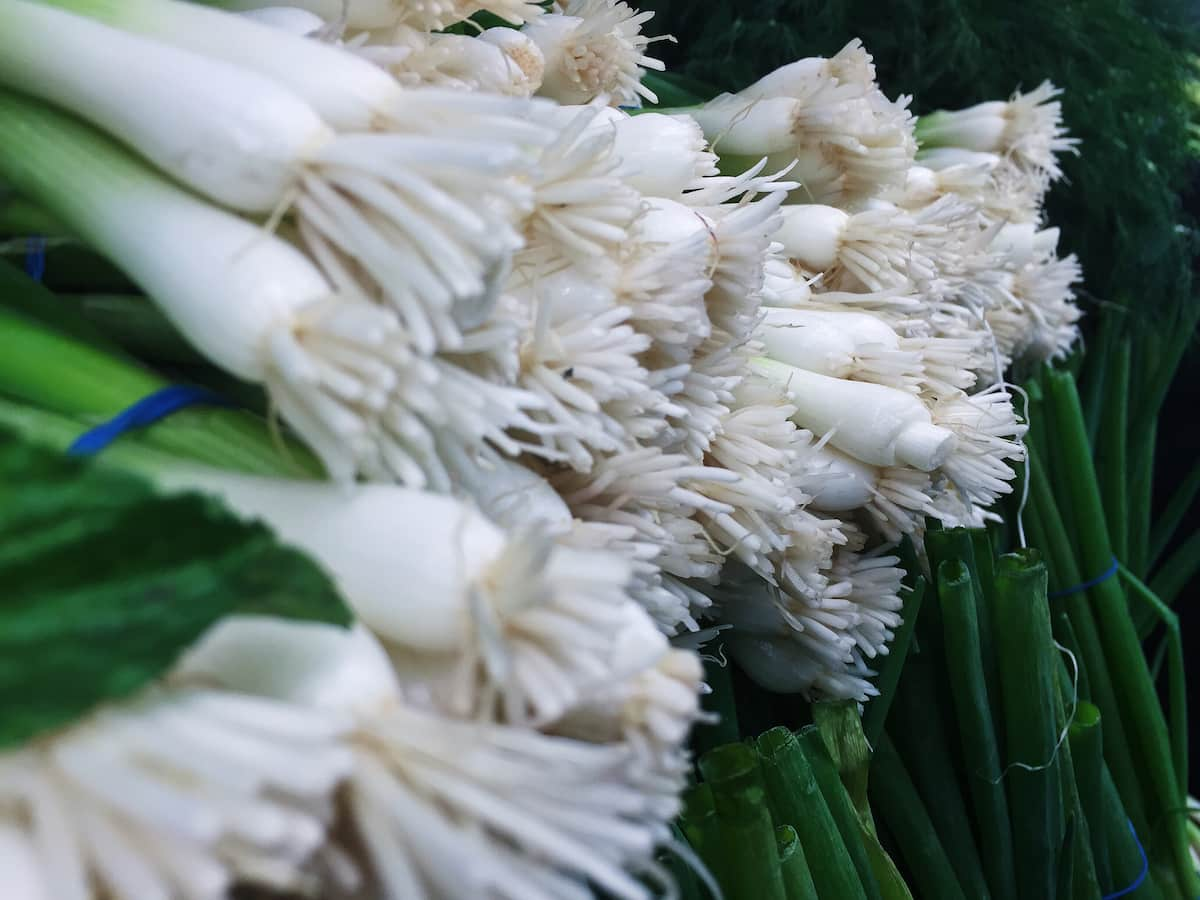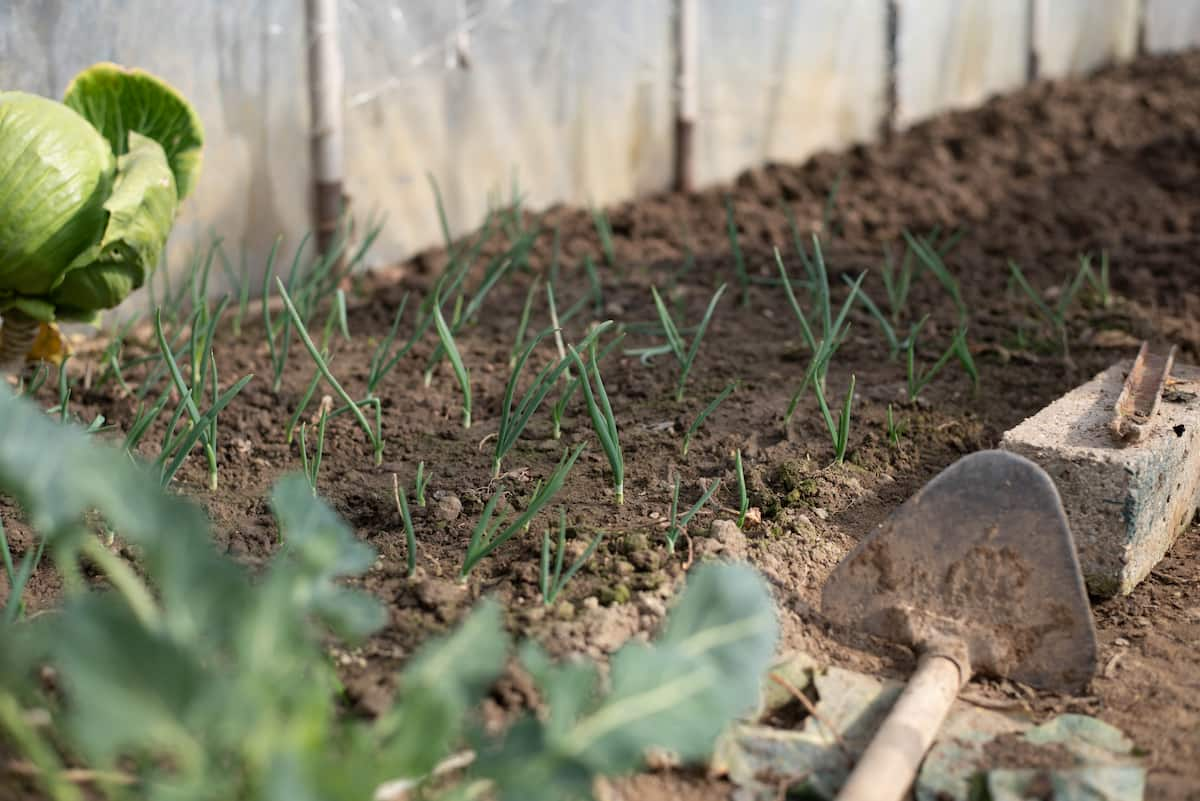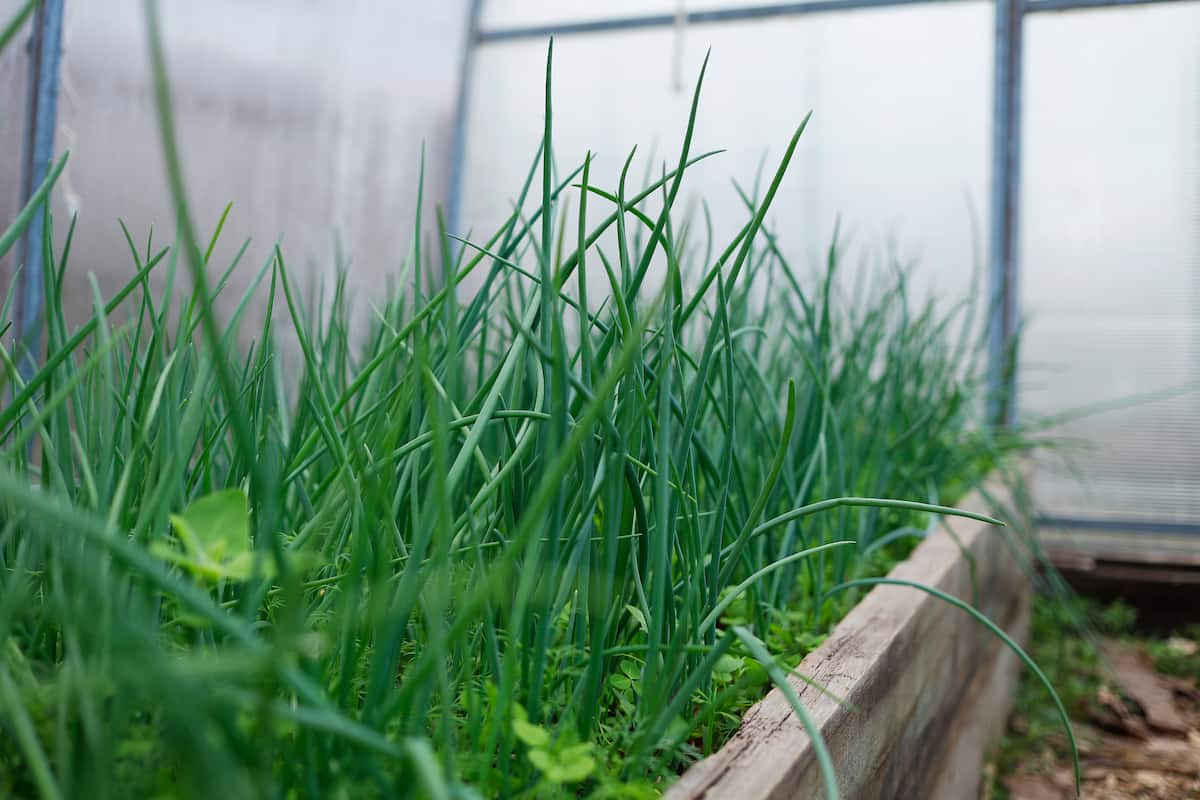The spring onion, also known as bunching onions, green onions, scallions, and Welch onions, is an evergreen perennial crop originating in Asia. Scallions don’t grow rounded bulbs like regular onions but form long, flavorful green leaves with thin, long bulbs. Their onion flavor is much milder, and they can be eaten raw.

In addition, spring onions grow very rapidly, unlike bulb onions. From seed to harvestable size, it takes only 50 to 60 days. Regular onions take 100 to 175 days. Also, they are not sensitive to daylight. In the greenhouse, you can sow seeds any time during the growing season.
How to Grow Spring Onions in Greenhouse
Sunlight Requirements for Spring Onions Growing in Greenhouse
It is best to grow spring onions in full sunlight, but they can also thrive in partial shade. Choosing an area that receives at least 6 hours of full sun per day is best. Their growth will be slower in the shade, but the afternoon shade can help keep them cool in blistering summer weather.
Temperature Requirements for Growing Spring Onions in Greenhouse
In six to twelve days, the plants emerge through the soil at 21 to 22°C. The daytime greenhouse temperature should be 15 to 18°C, and the nighttime greenhouse temperature should be 12 to 15°C. Heat mats or cables can be used under newly planted onion seeds to accelerate germination.
Soil Requirements to Grow Spring Onions in Greenhouse
A well-drained, fertile soil will be ideal for growing spring onions. Rich, sandy, loamy soil with good drainage and a pH balance that is slightly acidic to neutral, around 6.0 to 7.0, is ideal for spring onions. Ideally, you should mix some fertilizer into the soil a couple of weeks before planting, rake it, and ensure that any large lumps are broken down. Ensure your soil is moist 24 hours before planting, and check it a day before planting.
Types of Spring Onions Suitable for Growing in Greenhouse
A wide variety of spring onions are available, including some that are cold-hardy, some with red skin, and some that mature quickly. All grow mild-flavored straight stalks with green foliage. Spring onions come in a variety of types, including:
- Crimson Forest
- Evergreen Long White
- Ishikura
- Parade
- Tokyo Long White
- Warrior
How to plant Spring onions in Greenhouse
- Spring onions can be planted in seed trays for transplanting later outside or in pots or trays for growing in the greenhouse. Drainage should already be adequate in the trays.
- Prepare your trays by filling them with potting compost and firming them up.
- Make 3-inch rows with your finger, about half an inch deep.
- Sprinkle the seeds along the rows.
- Make sure they are covered with compost and firmly rooted. Be sure to water well.
- If you have a greenhouse, place it in a sunny position or in a cold frame if you don’t.
- You should see shoots in about two weeks if you keep watering.
- After three weeks of growth, they will be ready for transplantation.
- You can harden them off by placing them in a warm spot in the garden for a few hours a day.
- Prepare the soil where you want to plant them by digging around it and adding some fresh compost.
- Even out the soil by raking it and firming it up.
- Ensure the roots of the small plants are secure before planting them in the ground.
- Approximately 2 inches apart, plant them in rows.
- Cover them with soil and firm them in with your fingers.
In case you missed it: How to Grow Onions in Greenhouse: A Step-By-Step Guide for Seed to Harvest

Watering Requirements for Growing Spring Onions in Greenhouse
Keep your spring onions consistently moist with regular watering to prevent growth interruptions. A lack of water makes the bulb smaller and more pungent, even though mature spring onion plants are drought-tolerant. Insects and diseases are also more likely to affect plants that lack water.
Due to their shallow root system, spring onions live close to the soil’s surface. The top layer of soil dries first as it dries out from evaporation. Make sure the soil is moist by poking your finger about one inch deep every week into the ground. If the top inch of soil feels dry, water the onions well to rehydrate them.
Fertilizing Requirements for Growing Spring Onions in Greenhouse
Additional fertilizer should be applied throughout the growing season to spring onions because they are heavy feeders. Choose a fertilizer with a high nitrogen content for healthy, green growth. During the growing season, feed your plants an organic fertilizer according to the instructions on the package. Use organic nitrogen fertilizers, such as blood meal or feather meal, on the plants as a side dressing.
Weed Control for Spring Onions
Ensure the bed is well-weeded so the scallions don’t have to compete for space or nutrients. Some weeds will sprout through the mulch, even though mulch will prevent them. When you see weeds popping up, work through your garden and pull them by hand. Then, cover any bare soil with an additional layer of mulch.
Mulching for Spring Onions Growing in Greenhouse
Spring onion plants benefit from mulch layered around them. Keeping your scallions hydrated will be easier with mulch, as they prefer consistently moist soil. You can use any organic mulch, such as dried pine needles, straw, grass clippings, or shredded leaves. A mulched yard can retain moisture, control temperature, and suppress weeds, among other benefits.
Common Pests and Diseases in Spring Onions in Greenhouse
The most common pests are bulb mites, cutworms, leaf miners, onion maggots, and onion thrips. Most pests that feed on the leaves will not kill the plants, but they may destroy some foliage and spread fungal diseases. You can prevent pests from finding your plants by using row covers. Remove the affected leaves if you see signs of damage.
Botrytis, downy mildew, pink root, purple blotch, and white rot are the most common diseases that affect onions. The disease will kill your onions once they have been infected. You should destroy any infected plants and avoid planting spring onions in that garden bed for at least two years. Plants should be spaced properly, weeds should be controlled, and the soil should be healthy and drain well to help prevent fungal diseases.
Harvesting Spring Onions
As soon as your spring onions reach a usable size, begin picking them. When bulbs are white and about the diameter of a pencil, they are ready to be harvested, but even smaller seedlings can be harvested. If you intend to eat the mild white bulb, dig up the entire plant, snip the stem just above soil level, and let it grow.
In case you missed it: Can you Grow Onions from Store-bought Onions: Step-by-Step Process

Using a clean pair of kitchen scissors or garden snips is best. You can enjoy a continuous harvest by leaving the roots and base of the plant in the ground and cutting off the stalks an inch or two above the soil line with cut-and-come-again harvesting techniques like the latter.
Conclusion
With minimal investment, spring onions can be grown. It is possible to grow onions almost anywhere: on a windowsill in a residential building, in a greenhouse, in a garage, or a basement. The profitability of a business depends directly on the volume of the plant produced. In closed-equipped premises like a greenhouse, spring onions can be grown year-round.
- Feed Your Flock for Less: Top 10 Tips to Save on Chicken Feed
- Ultimate Guide to Ossabaw Island Hog: Breeding, Raising, Diet, and Care
- Hatching Answers: The Top 10 Reasons Your Chickens Aren’t Laying Eggs
- Eggs and Economics: Breaking Down the Cost of Raising Backyard Chickens
- Defend Your Greens: Proven Methods to Keep Iguanas Out of Your Garden
- Ultimate Guide to Cinnamon Queen Chicken: A Comprehensive Guide for Beginners
- Ultimate Guide to California Tan Chicken: Breeding, Raising, Diet, Egg-Production and Care
- Ultimate Guide to Marsh Daisy Chicken: Breeding, Raising, Diet, and Care
- 10 Types of Chicken Farming Businesses You Can Start for Profits